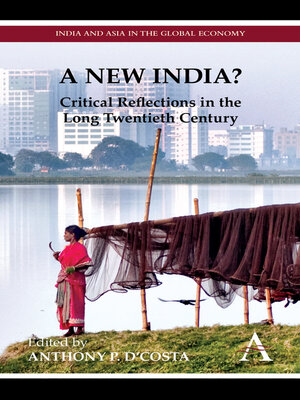A New India?
ebook ∣ Critical Reflections in the Long Twentieth Century · India and Asia in the Global Economy
By Anthony P. D'Costa

Sign up to save your library
With an OverDrive account, you can save your favorite libraries for at-a-glance information about availability. Find out more about OverDrive accounts.
Find this title in Libby, the library reading app by OverDrive.



Search for a digital library with this title
Title found at these libraries:
| Library Name | Distance |
|---|---|
| Loading... |
This volume critically examines the notion of a 'new' India by acknowledging that India is changing remarkably and by indicating that in the overzealous enthusiasm about the new India, there is collective amnesia about the other, older India. The book argues that the increasing consolidation of capitalist markets of commodity production and consumption has unleashed not only economic growth and social change, but has also introduced new contradictions associated with market dynamics in the material and social as well as intellectual spheres.
|This book challenges the notion of a 'new' India, not by dismissing it as an imagined India, but by engaging in the debate as to what constitutes the new. It acknowledges that India is changing remarkably, while also acknowledging that in the overzealous enthusiasm about the new India there is collective amnesia about the other, older India. The essays argue that the increasing consolidation of capitalist markets of commodity production and consumption has unleashed not only economic growth and social change, but also introduced new contradictions associated with market dynamics in the economic and social spheres such as agrarian crisis, slow growth of employment, and the persistence of low-caste exploitation.
The volume also investigates the emergent tensions in art, architecture, and citizenship. In transforming India into an IT valley with corporate campuses, appealing to a westernized audience of technology entrepreneurs, including non-resident Indians abroad, architecture arguably is not addressing India's economic and social plight. Art too has taken a commercial turn by catering to the new middle classes spawned by the global and Indian technology revolution. The extraordinary economic values they command seem to jar with the grim economic and social polarization underway. The book unravels contemporary India in its complexities and uncovers some of the hidden tensions plaguing the country, and points to the significance of a widely shared development outcome as an alternative for social transformation.







